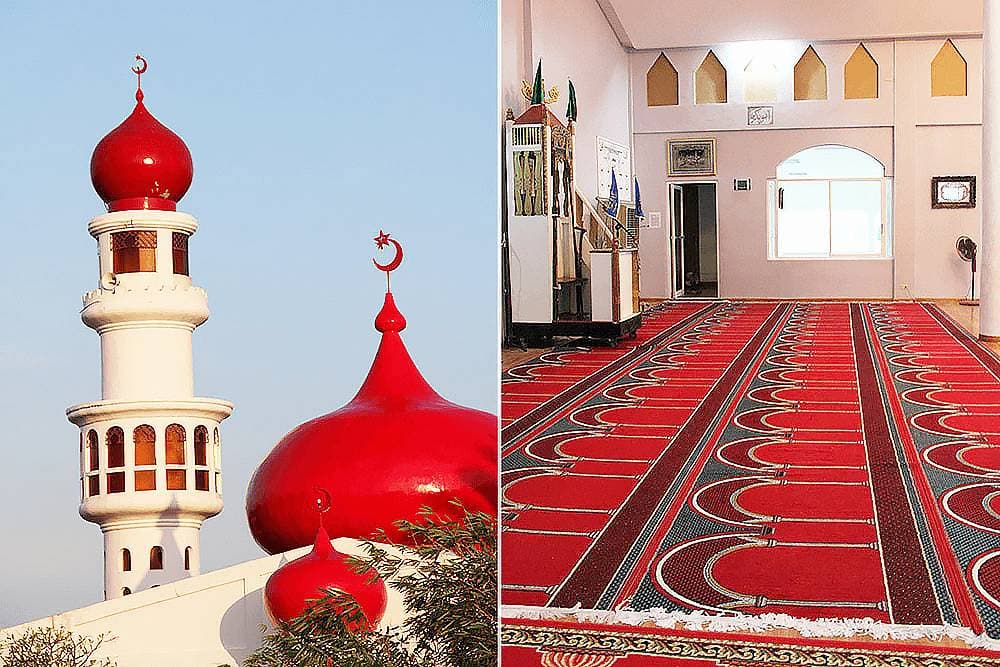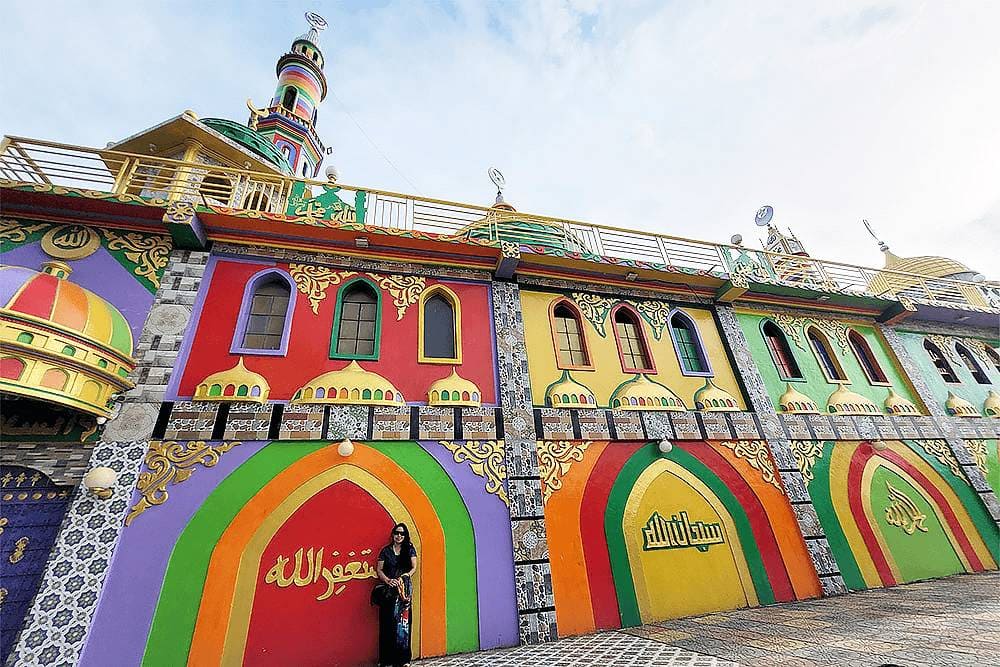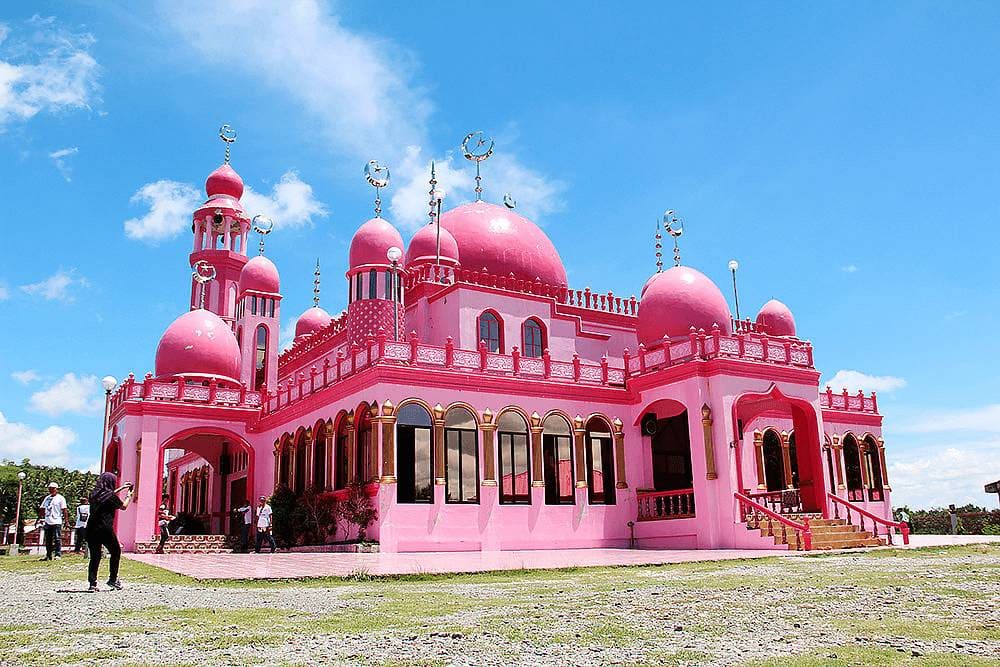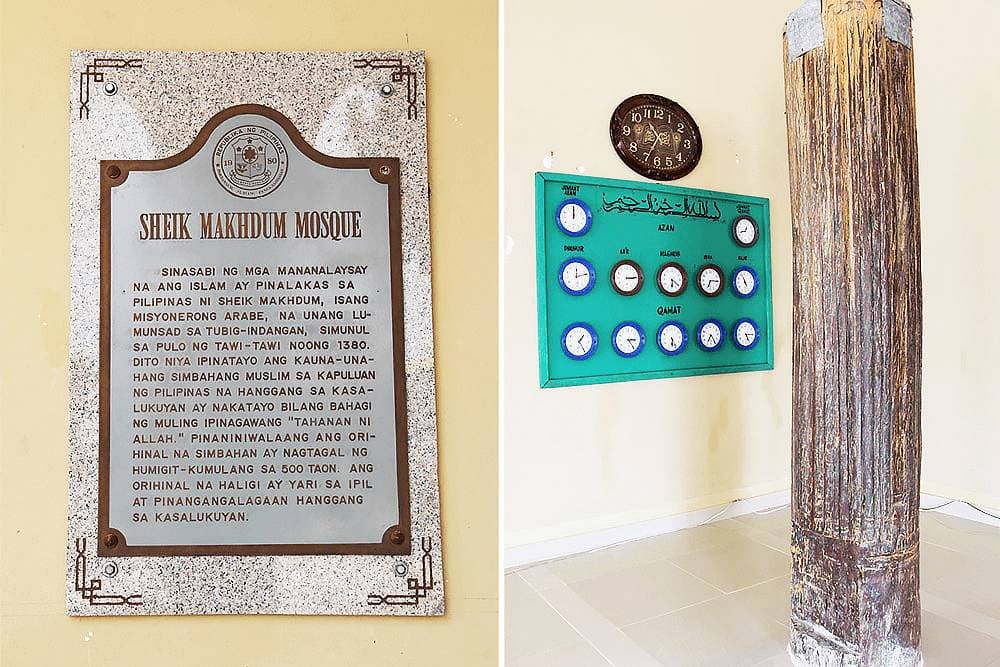The holy month of Ramadan is finally upon us. The ninth month of the Islamic calendar, observed by over 1.7 billion Muslims worldwide, officially started on Thursday, March 23 and will last until April 20.
During this time, the Muslim faithful are encouraged to study the Quran, refrain from eating and drinking from sunrise to sunset, and spend time in prayer and reflection in mosques.
In line with this Muslim observance, let us take a look at some of the most beautiful mosques around the Philippines, where worshippers will be gathering to practice their faith.
The Grand Mosque (Sultan Haji Hassanal Bolkiah Mosque), Cotabato City
The Grand Mosque of Cotabato City, officially known as Sultan Haji Hassanal Bolkiah Mosque, is the largest mosque in the Philippines, and among the largest in Southeast Asia. This stunning Islamic landmark for worship occupies 5,000sqm of land area and features 14 majestic gold domes & four minarets soaring up to 40 meters high. The mosque has a capacity that can accommodate up to 15,000 worshippers at a time.
The Grand Mosque, designed by the Filipino architect firm Palafox Associates, takes inspiration from the modern and classical masjids in Turkey, Dubai, and the Arabian Gulf while incorporating architectural elements from Filipino Muslim culture.
The mosque is named after the Sultan of Brunei who donated over 40 million US dollars for the building to help the emerging Muslim population in Southern Philippines.
Taluksangay Mosque, Zamboanga City
Known as the oldest mosque in Western Mindanao, the Taluksangay Mosque is located in the coastal village of Taluksangay in Zamboanga City. Built by Hadji Abdullah Maas Nuno in 1885, this masjid with its striking red domes is said to be the first center of Islamic propagation in the Zamboanga Peninsula, with Muslim religious missionaries from Saudi Arabia, India, Malaysia, Indonesia, and Borneo flocking to this village through the years.

Located in a coastal area on the outskirts of the city, the Taluksangay Mosque is set on the banks of a river that attracts travelers from all over to visit. Aside from being an Islamic place of worship, the mosque itself has become a tourist landmark in Zamboanga City for voyagers of different faiths for its historical significance.
Rainbow Mosque (Masjid Al-Islamia), Zamboanga City
Aside from the Taluksangay Mosque, Zamboanga City is home to another notable and relatively new mosque right within the city center. The Masjid Al-Islamia, also known as the Rainbow Mosque, can be found in Brgy. Sta. Maria, Tumaga Road, which is along the highway.
Sometime after the Marawi Siege of 2017, the original green and white mosque was repainted as a tribute to fallen heroes and to symbolize peace and goodwill.

The dome and minaret now sport bright colors of the rainbow, while both the exterior and interior walls of the mosque feature intricate details and distinctly Maranao designs with okir patterns. Okir or okil is the term for plant-based designs, folk motifs, and Arabic geometric figures used primarily by the Maranao.
Local media outlets report that the seven colors of the dome represent the different cultures, religions, traditions, and beliefs of the residents of Zamboanga City, who manage to live together in harmony. The colors also reflect the image of Zamboanga as a colorful and multi-cultural destination.
The Pink Mosque (Masjid Dimaukom), Maguindanao Del Sur
The Pink Mosque, also known as Masjid Dimaukom, is an Islamic place of worship that can be found in Datu Saudi-Ampatuan in Maguindanao del Sur. The mosque’s design was said to be initiated by the late Mayor Samsudin Dimaukom to change the image of Maguindanao.

Built back in 2014, the Dimaukom Mosque stands on the old property of then-Mayor Dimaukom. Painted remarkably pink, which attracts tourists from all over, the mosque’s rosy color is meant to symbolize peace and love.
The locals envision the mosque to be a symbol of unity and interfaith brotherhood for the whole Maguindanao region. Both Muslims and Christians helped build this place of worship, further emphasizing the unity of different faiths.
Sheik Makhdum Mosque (Sheik Karimol Makhdum Mosque), Tawi-Tawi
The Sheik Karimol Makdhum Mosque in Tawi-Tawi is considered the oldest mosque in the Philippines and in Southeast Asia.
It is located in Barangay Tubig Indangan on the remote island of Simunul, roughly 12 km by boat from Bongao, the capital of Tawi-Tawi. According to local folklore, it was built by an Arab trader named Sheikh Makhdum Karin in 1380.

While the pillars found within the present mosque were originally believed to date back to 1380, recent studies from the National Museum of the Philippines confirmed that they date back closer to the 17th century as remnants of a reconstruction. Today, due to its long history spanning 400 years, the four pillars are considered sacred and have high status in Philippine culture. They are currently the oldest known Islamic artifacts in the entire Philippines.
In 2012, the National Historical Commission of the Philippines (NHCP) recognized the Sheik Makhdum Mosque as a National Historical Landmark, listed as one of the Philippines’ oldest existing Muslim Houses of Prayer. It has also been designated a National Cultural Treasure by the National Museum.
While these mosques are primarily places of prayer and worship for Muslims, they have also become destinations for people of all faiths because of their historical and cultural significance.
Non-Muslim visitors can visit these stunning mosques to meet Muslim community members, learn more about the culture, and admire Islamic architecture when they travel around Mindanao any time of the year.
Ramadan Mubarak!
